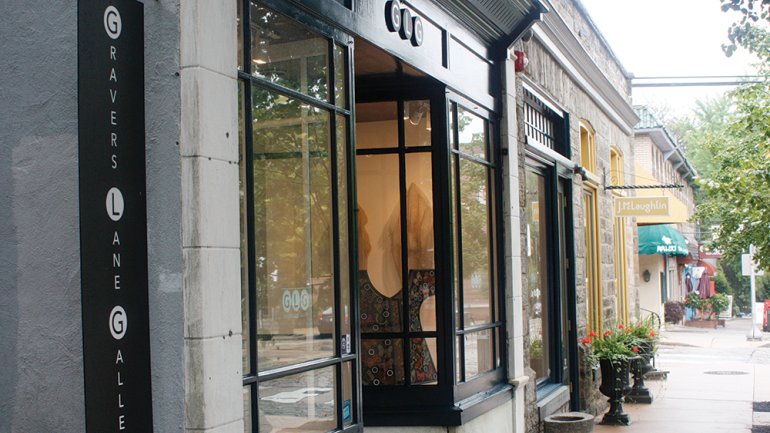Creative Commons
Creative Commons
Gravers Lane Gallery
8405 Germantown Ave.
Philadelphia, PA 19118
215-247-1603
In an era when galleries are moving online, realigning their efforts to focus on expos, or closing altogether, Gravers Lane Gallery, in Chestnut Hill on the northwest cusp of Philadelphia, is a bit of an anomaly. The gallery opened in 2011 as an offshoot of local developer Ken Goldenberg’s real estate enterprise, the Goldenberg Group, and already, it has celebrated a few milestones – including a recent expansion and a renovation completed in mid-October.
Commercial success isn’t the only thing that sets this gallery apart. Gravers Lane also operates, in many ways, like a nonprofit, with a community outreach strategy that includes exhibitions, partnerships, and support of organizations such as the youth-oriented Stained Glass Project.
At the helm of operations is Bruce D. Hoffman, an independent curator, artist, writer, and educator with nearly three decades of experience in the Philadelphia area as an advocate for the arts. We talked with Hoffman to learn more about how Gravers Lane marries doing well with doing good.
Ken Goldenberg’s development group specializes in projects with a positive social impact. How does a retail gallery fit into the picture?
Community outreach and assistance – it’s very dear to [Goldenberg]. And it was one of his ideas to have this gallery for the community; it’s another way of giving the community something.
When I met Goldenberg, one of the things I said to him was: I’m straightforward and transparent, and I do things my own way – and he loved it. He gave me carte blanche to build this gallery and make it something special. I’ve been working on that for over three years.
Why is the community aspect of Gravers Lane so important?
It’s pivotal that small galleries stay in their community. Their doors are open, and people are allowed to walk in whether they have the means to purchase or not. It’s a true educational facility for young artists – and a place to cultivate new collectors.
If you can’t see something firsthand, it’s not art anymore. Especially in the decorative art world, because everything is so visceral and tactile. You need to go in. You need to touch a pot. Do you know what I mean? A piece of jewelry you need to handle.
Gravers Lane represents a fair number of Philadelphia artists. Was it an intentional decision to promote local talent?
No, we represent a wide range of artists, internationally as well as locally. I have no bias toward region or age. I want to show the highest-quality, most innovative work possible, from production to one-of-a-kind, from monumental to miniature. But I’m not going to take something I don’t have the market for. I don’t think that’s fair – to tie an artist up when you can’t help them make a living. Because it’s a win-win when you can sell the work.
Earlier this year you transformed a site next door to the gallery into a supplemental exhibition space. And then you decided to renovate the original gallery. What prompted these changes?
The idea is more space, more elegance, be able to show things better. [With the renovation], it’s like when you buy a new shirt and [then realize] your pants don’t look good. We realized our pants were a little tattered.
The old space used to be a musical theater store. It still had retrofitted, kind of ’80s counters. We wanted to make it very sophisticated, cutting-edge, but still maintain a welcoming environment. There’s nothing worse than walking up to a gallery and feeling uncomfortable about pulling the door open.
I think that goes back to my youth going into New York and feeling uncomfortable walking into a gallery, because they used to look at us like, “Art students, go away.” And I’m quite the opposite. I want the students to come in.
Dakota Sexton is American Craft’s assistant editor.

